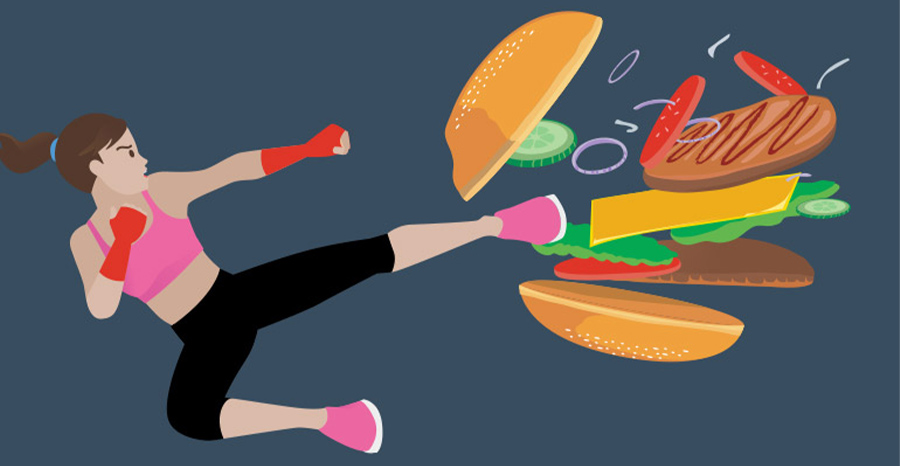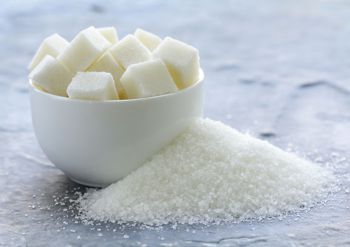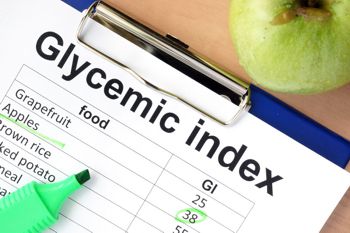
Foods That Make Us Fat
This post about foods that make us fat, along with my previous post: Why Does Our Body Store Fat, form a foundation for all future articles on exercise and weight loss. If you haven’t read that post, please do so now, as this article assumes you understand what an insulin spike is, and why you need to avoid it.
Our Bodies’ Fuel Source

Sugar is the fuel that runs our body. Combined with oxygen, it powers our cells in the same way that gasoline and oxygen power our cars. We all know that without oxygen we die in minutes, but did you know that if all the sugar was removed from your body, the same thing would happen?
Your body has three sources of sugars, and for the most part, it will always use the one that’s most accessible. The first is free sugars, just floating around in our cells and our bloodstream. These sugars are sitting right there in the open, just waiting for your cells to burn them. Unfortunately, this energy source doesn’t last long. Under intense exercise free sugars will run out in minutes.
Sugar Snowballs
The next source is glycogen. Think of glycogen as sugar snowballs that your body stores in your muscles and your liver. When your body needs energy, it unpacks these snowballs so it can use the sugars stored inside. Under intense exercise most people will use up their glycogen stores in about 40 to 50 minutes. If you’ve heard of runners and other endurance athletes ‘hitting the wall’, what happened was their glycogen ran out. No more easy-to-get sugars. The only source left is very hard for your body to break down and very inefficient!
Once the free sugar and glycogen is gone, the only source of fuel left is fat. It takes a lot of energy to break fat down and turn it in to sugars for our cells to use, so our body doesn’t like to do that. It will take the other two forms of energy as long as they’re available. This, by the way, is a key to understanding the only really effective way to exercise for fat loss, which I’ll address in later posts.
Of course, our body also gets sugar from the food we eat. This is sugar that can be obtained from our stomach and digestive tract, and once again, our body prefers to use this rather than the fat we’ve stored. It would be nice if fat was the first fuel source our body goes after, but unfortunately fat comes in dead last. Your body only burns it in any appreciable quantity once there are no other sources available.
Glycemic Index

The energy potential of a food can be measured by something called the Glycemic Index. The Index measures the rate at which your body breaks that food down in to sugar. The scale runs from zero to 100, with high numbers indicating foods that are easily turned in to sugar. Not surprisingly, the glycemic index of table sugar is 100! (There are some sugars that rate at 110 but that’s getting way more technical than we need to be).
Now, remember the insulin spike? (OK, I warned you. If you didn’t read that article, go read Why Does Our Body Store Fat now, otherwise the rest of this won’t make sense).
The way to avoid having your body store fat is to avoid insulin spikes. We want our body to have a steady level of insulin at all times. In order to do that we need to maintain a steady sugar level. While the size of meals we eat and how often we eat them plays a role in this, a major factor in avoiding insulin spikes is avoiding high glycemic index foods. If we eat a high glycemic index food (that donut, for example) our body has no choice but to produce a large amount of insulin to compensate, and “ta da!” an insulin spike results and the donut settles on our waist or hips.
Higher Than 65?
Any food with a glycemic index higher than 65 is likely to produce an insulin spike of some degree and therefore some portion of that food will be stored as fat, unless we’re short of calories, and even then it might store some of it. Although it will just burn that fat again later as long as we don’t eat anything else.
This ‘stay below 65’ rule is a real problem in our society due to the prevalence of highly processed foods, virtually all of which have high glycemic indices. Cereals, bread, fast food, sugary drinks, candy, junk food, desserts…all of these and more have very high glycemic index levels and we eat a LOT of them.
Helpful Tools
A major key to learning to eat the right foods is learning to change your diet so you stop eating high glycemic index foods. Fortunately there are two tools that can help make that easier. First, there are apps for your phone that will tell you the glycemic index of any food in seconds. So, simple rule – if it’s higher than 65, don’t eat it!
A Really Simple Method

If tracking that is too much work, then there’s a real simple rule you can follow that will guarantee the foods you’re eating will be below 65; stick to a diet of proteins (meat and eggs), raw fruits and raw or steamed vegetables.
It’s a myth that exercise alone will allow you to lose weight. Diet plays a vital role, and by ‘diet’ I don’t mean ‘a diet’. Diets, in the sense of a temporary change to our eating habits, are self-destructive and doomed to fail.
A diet high in proteins, vegetables and fruits will ensure eating low to medium glycemic index foods and avoiding insulin spikes
When I talk about ‘diet’ I mean the way you eat all the time; the foods you put in your body every day, and the quantities and times in which you eat them. If you don’t learn to control your diet, you’ll have great difficulty losing any real quantity of body fat and no success at all in keeping it off. On the other hand, learn these two simple concepts, insulin spikes and glycemic index, and, combined with proper exercise, you can watch the fat melt off your body.
Now that we’ve laid a foundation, in coming articles I’ll address effective exercise methods for fat loss. Next week: The Best Kept Secret of Weight Loss: Gaining it First!
Will Dove
Latest posts by Will Dove (see all)
- Body Weight Training 2.0: Calisthenics - 22 Apr
- All About Protein Powders - 9 Apr
- Top 5 Fitness Trends for 2019 That You Should Try - 30 Mar
